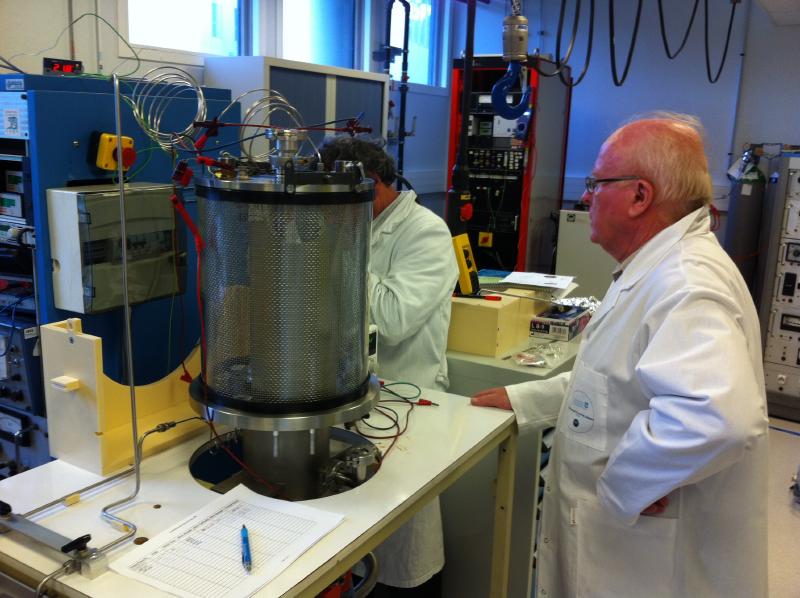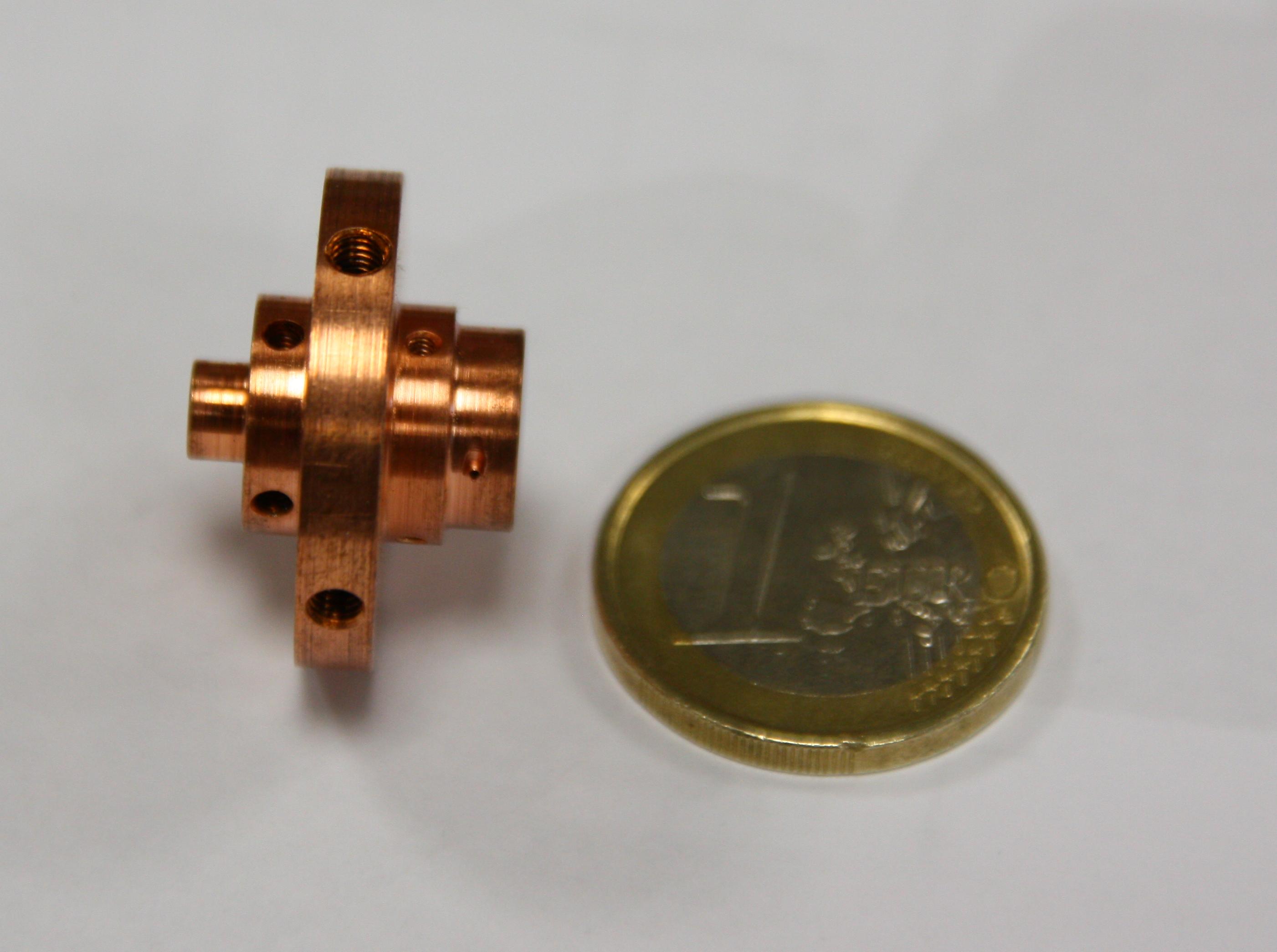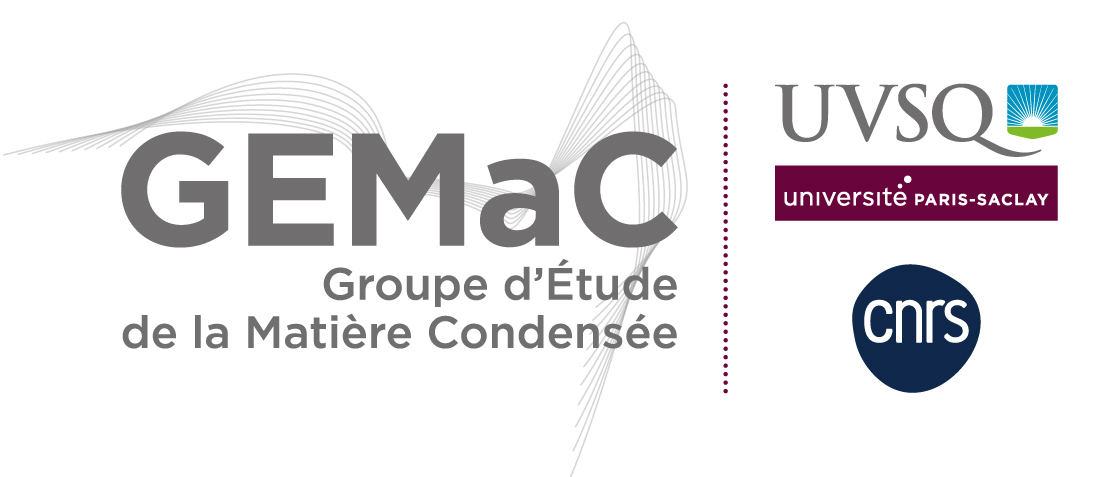You are here : GEMACENHighlights
From the GEMaC laboratory to space: a 20-year history of innovative thrusters for miniature satellites
A look back at the incredible story of the Petit Propulseur Innovant (PPI) and its successor the µ-PPI, whose prototypes were invented, designed and built at GEMaC.
on the February 3, 2021
Firing test of the µ-PPI
Some challenges of small satellite space propulsion
Since 1999, a new concept of a 1 dm3 nano-satellite, called CubeSat, has been introduced at the initiative of CalTech and Stanford University. This concept was intended to be a technology demonstrator and to train students on space issues, with moderate costs. Various scientific and technical programmes based on CubeSats have been implemented around the world. However, a number of these projects are limited by the lack of onboard propulsion on CubeSats. Indeed, by design, CubeSats are ballistic objects whose trajectory depends only on initial conditions (altitude and velocity) and on the friction of the surrounding atmosphere when the altitude becomes low enough. If they were equipped with a thruster, it could be used for attitude control, orbit corrections or changes, rendezvous, long-distance missions, or even controlled de-orbiting to comply with the French law on objects in space, LOS (2008).
What is a Hall Effect Thruster (HET)?
Proposed more than 100 years ago by the American physicist R. H. Goddard, the concept of electric propulsion was developed by Russian researchers under the direction of A. I. Morozov in the 1970s. It is a thruster that uses an electric field to accelerate gas ions that produce thrust. In the so-called Hall effect thruster, it is the magnetic field, usually produced by electric coils, that is used to trap the electrons that ionise the gas. This increases the ionisation efficiency and ultimately reduces the weight of the propulsion module.
An innovative HET proposal and proof of concept from GEMaC
Thanks to his skills in magnetism, Marcel Guyot, a CNRS researcher in one of GEMaC's predecessor laboratories, was invited in the 2000s to be part of the Propulsion Research Group (GdR) associating several teams from the CNRS and universities, ONERA, CNES and SNECMA, for the study of Hall effect space thrusters. His knowledge is needed to determine the distribution of the magnetic field in a Hall effect thruster. Marcel quickly proposed replacing the electrical circuit - which controls the confinement of charged particles - with a magnetic circuit based on permanent magnets. This greatly reduced the size and weight of the thruster. The following innovations are made possible by the pooling of expertise in the laboratory. GEMaC researchers and engineers are specialists in magnetism, magnetic materials and circuits, ceramics and also in mechanics and vacuum techniques. Under the direction of Marcel Guyot, this combined expertise has made it possible to reduce the size of the thruster and to create the smallest HET in the world, as well as to add a thrust control function, which would have been impossible with permanent magnets. The very first successful firing tests of the micro-thruster took place at GEMaC on 6 February 2014 in a vacuum chamber developed by the laboratory's engineers. Following this, the remarkable work of GEMaC's mechanical workshop, led by Stéphane Denise, combined with the physical measurement skills of Marcel Guyot and in collaboration with students from the École Polytechnique, led to the construction of the micro-thrust measurement balance that allows the propulsion force to be quantified.


Marcel Guyot during tests µ-PPI scale
Towards applications
The development of this micro-propellant was supported by the CNRS through the Institute of Physics' "Incentive for Innovation" programme in 2014. This support then enabled the CNRS and UVSQ to present a maturation project to SATT Paris-Saclay, together with the OVSQ's integration and testing platform (PIT). The project was selected at the end of 2015 and started in July 2016. This was followed by the creation, in 2017, of the start-up Exotrail, which is now one of the most promising deeptech start-ups in the French "New Space" sector and which has just raised €11 million for the development and commercialisation of space propulsion systems.
> Exotrail, la success story d'une start up deeptech qui a failli ne jamais voir le jour
Read more:
Image credits :
©S. Denise - GEMaC UVSQ/CNRS







